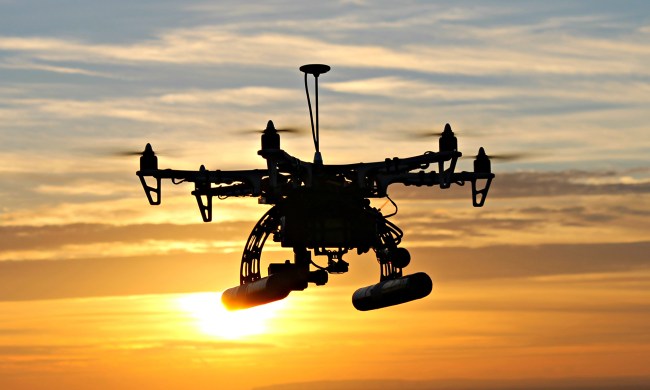The new set of rules are designed to improve safety as the remotely controlled machines grow rapidly in popularity. It means unmanned aircraft weighing more than 200 grams can no longer be flown in designated built-up areas, a law that overnight brings an end to all drone flights over Tokyo’s 23 wards, the Japan Times reported.
Changes to the country’s Civil Aeronautics Law also bans flights close to airports and at large gatherings like festivals or sports events. Meanwhile, flights in unrestricted areas across the country are required to stay below 150 meters (492 feet), and also be kept at least 30 meters (98 feet) from people, buildings, and vehicles.
Cops with nets
Sources told the Japan Times that Tokyo’s Metropolitan Police Department is even intending to set up a special anti-drone unit for identifying and taking down suspicious-looking UAVs spotted in the capital. The report said the unit would use “a large drone” with a net to capture UAVs caught flying in areas like airports, a comically crude solution for a country brimming with tech know-how. If the story is indeed true, many will wonder why the authorities aren’t going for a high-tech solution like this, or this, instead.
Drone operators can apply for permission to fly in restricted areas, with regulators examining each application on a case-by-case basis. Rule breakers could be fined up to 500,000 yen ($4,100).
Masahiro Kobayashi, an Osaka-based lawyer with experience in drone-related cases, told the Japan Times that while some of the new laws are acceptable, restricting the use of toy devices as light as 200 grams was unfair, as is the move to stop people flying their machines in pretty much all urban locations.
Kobayashi suggested the rules would deter youngsters from experimenting with the technology, which in the long-term could damage the expansion of drone-related industries. One solution, he said, would be to set up special zones in cities where anyone could fly their machines without restrictions.
The government woke up to the growing popularity of UAVs – and their myriad of possible uses – in April when a political protester from western Japan used a DJI Phantom to transport a batch of radioactive sand onto the roof of the prime minister’s office in Tokyo.
Before then, Japan had few regulations governing use of the machines, which, as in the U.S. and other countries, have become hugely popular over the last 12 months.
Further drone-related incidents over the summer motivated lawmakers to push ahead with new laws. In May, for example, a drone operated by a 15-year-old boy crashed on a festival parade in Nagano, while in September a 49-year-old man admitted to crashing a remotely controlled copter into Himeji Castle, a UNESCO World Heritage site 60 miles west of Kyoto. Another UAV burst into flames while filming a cycle race, though that one belonged to the event’s organizers. No one was injured in the incident.
As in the U.S., the Japanese authorities are continuing to examine ways to regulate the commercial use of drones. Recommendations are expected to be announced in the summer.


